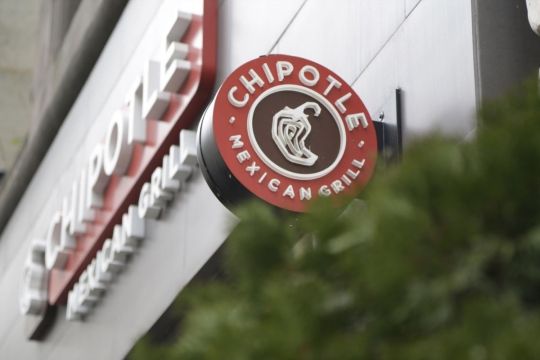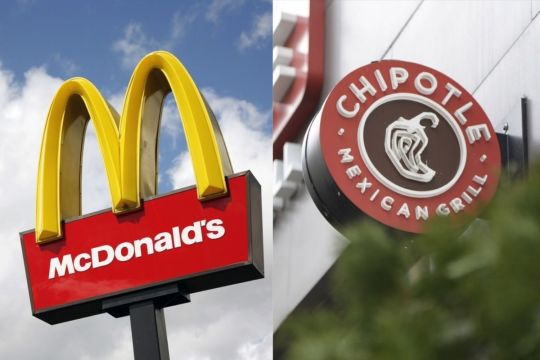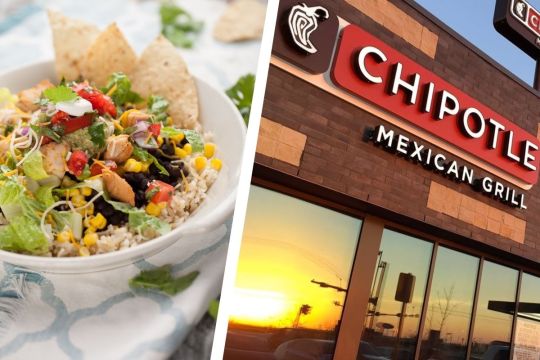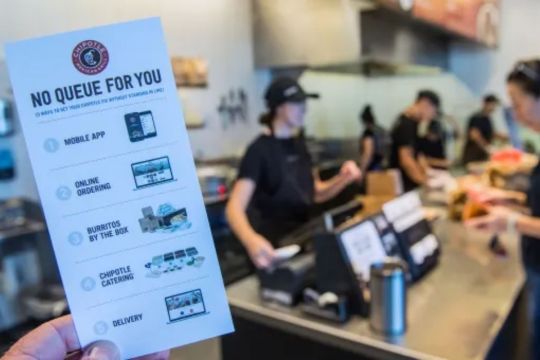#Digital Evolution
Explore tagged Tumblr posts
Text
#80snostalgia #retromovies #vhs #CDS #bluray #netflixandchill #StreamingLive #DigitalEvolution #moviememories #subscriptionera #1980smovies #1980skid
#1980s movies#1980s#nostalgic#retro movies#vhs tapes#cds#blue ray#dvd#netflix#digital evolution#streaming live
3 notes
·
View notes
Text
La Transformación de los Medios: Del Consumo Lineal a la Era de la Instantaneidad

La evolución de los medios de comunicación a lo largo de las últimas décadas ha estado marcada por avances tecnológicos que han transformado radicalmente nuestra forma de acceder a la información y el entretenimiento. En el pasado, el consumo mediático era mayormente analógico, lineal y pasivo; los oyentes y espectadores se ajustaban a los horarios impuestos por la radio o la televisión y aceptaban los ritmos narrativos lentos de los programas de ficción o los boletines informativos. Sin embargo, con la llegada de Internet y la digitalización de los contenidos, el acceso se ha vuelto inmediato y flexible, permitiendo a los usuarios elegir qué, cuándo y cómo consumir. Plataformas como Netflix o Spotify no solo agregan contenidos, sino que personalizan las recomendaciones a través de algoritmos que moldean nuestros hábitos de consumo de manera prácticamente instantánea.

La rapidez y la instantaneidad son ahora las principales características del ecosistema mediático digital. La posibilidad de saltar episodios, comprimir la duración de los contenidos e interactuar en redes sociales ha reconfigurado la manera en que percibimos el tiempo y, en consecuencia, la profundidad con la que absorbemos la información. Esta cultura de lo "rápido" ha dado lugar a formatos breves, como los tuits, los memes o los vídeos de TikTok, que aunque breves, suelen tener un impacto emocional o informativo inmediato. Esta tendencia plantea un debate sobre si la inmediatez y la velocidad de consumo nos permiten valorar realmente la complejidad y calidad de los contenidos.
Personalmente, aunque aprecio la flexibilidad y el acceso inmediato que brindan las plataformas digitales, me preocupa que la velocidad con la que consumimos contenidos reduzca nuestra capacidad de reflexión crítica. La cultura "snack" o de microformatos puede ser útil en ciertos contextos, pero también puede llevar a la superficialidad en nuestra comprensión de los medios y su mensaje. La saturación de estímulos y la presión por aprovechar cada minuto nos empujan a priorizar la cantidad sobre la calidad, lo que puede erosionar nuestra capacidad para valorar en su justa medida las historias, la información y el arte que consumimos.

En conclusión, el impacto de la tecnología en los medios ha democratizado el acceso y enriquecido las posibilidades de entretenimiento e información, pero también ha condicionado la manera en que nos relacionamos con ellos. La alfabetización mediática digital es, por tanto, más necesaria que nunca, no solo para aprender a manejar las herramientas disponibles, sino para desarrollar una comprensión más profunda y crítica del contenido que consumimos en esta era de la instantaneidad.
2 notes
·
View notes
Text
The Sigzen Advantage: Revolutionizing Businesses Through Cutting-Edge Data Center Services
Introduction to Sigzen Sigzen Technologies stands resolute in its commitment to redefine the sphere of IT infrastructure management. Our unwavering mission revolves around empowering businesses with bespoke Data Center Services, finely crafted to cater to their distinct and intricate needs. In the modern landscape, data centers serve as the central hub for managing, processing, and safeguarding…

View On WordPress
#Business Tech Solutions#Data Center Services#Data Management Insights#Digital Evolution#Digital Landscape Overview#IT Infrastructure Explained#IT Success Strategies#Mastering Tech Services#Technology Transformation
2 notes
·
View notes
Text
youtube
It's Never Too Late to Thrive In The Online Space - How To Leverage The Digital Evolution
The term "Digital Evolution" refers to the ongoing process of transformation and adaptation in the digital realm. It encompasses various aspects of our society, economy, and technology as they continuously evolve in response to digital advancements
#online business#digital landscape#digital evolution#online space#ecommerce business#online business that pays daily#online business for sale#online business from home#best online business#internet business#online marketing business#juliesolomon#the online space#social media#it's never too late to thrive in the online space#how to leverage the digital evolution#e commerce company#top ten online businesses#ecommerce companies#buy online business#Youtube
2 notes
·
View notes
Text

The Pinnacle of Digital Success: Unveiling the Top Benefits of UI Design – Europe Website Designers
At Europe Website Designers, we believe great UI design is the cornerstone of digital success. A well-crafted User Interface not only enhances visual appeal but also ensures intuitive navigation, faster user engagement, and increased customer satisfaction. From seamless interactions to brand consistency, effective UI design directly impacts user retention and conversion rates. Whether you're launching a startup or scaling an enterprise, our expert UI design services create powerful digital experiences that captivate users and drive measurable results across web and mobile platforms.
Kindly message me for an in-depth conversation. Email us: [email protected] Visit us: https://www.europewebsitedesigner.com/
#Europe website designer#UI Design#UI UX Designer#Web Design#Web Designing Company#Web Development Company#Hire Developers#web Development Service#Looking for web Development#web Development Team#Hire web Developers#Digital Success#European Designers#Innovation In Design#Web Design Innovation#User Interface Magic#Digital Transformation#Design Inspiration#Tech Trends#UI Benefits#Digital Evolution#Website Design#Innovative UI#Design Thinking#Digital Journey#User Experience#Tech Innovation#European Tech#Creative Design#Pinnacle Of Success
1 note
·
View note
Text

PRINT IS A REBELLION AGAINST DIGITAL CHAOS. https://ift.tt/WiE4Al9
#media#magazines#microsoft#software#editorial revival#tech#digital media#digital evolution#business strategy#trends#p#media platforms
0 notes
Text
How Chipotle Became a Global Leader in Fast-Casual Dining?

In the food & beverages industry, a brand has grown from rags to riches by defying conventional food to modern-day fast-casual dining. The brand is none other than Chipotle Mexican Grill, Inc. (NYSE: CMG). it has created a mark for itself in the market by amalgamating real, responsibly, sourced ingredients with innovative techniques & unmatched operational excellence. For global leaders in the food industry, a brand like Chipotle is a testament of compelling case study & an epitome of sheer excellence. This article explores the brand's trajectory from a single location to a multinational powerhouse, highlighting the strategic pillars that underpin its success in the fast-casual dining space.
Founding Principles: The Inception of a Culinary Vision
Chipotle was founded in 1993 by Steve Ells, a classically trained chef from the Culinary Institute of America. The original vision was simple yet disruptive: to offer high-quality food served quickly, combining the convenience of fast food with the culinary standards of fine dining. This innovative blend laid the foundation for what is now known as fast-casual dining. With its first location near the University of Denver, Chipotle quickly attracted attention with its burritos, tacos, and bowls crafted from wholesome ingredients.
The Fast-Casual Dining Arena
Quick-service dining emerged as a response to the growing demand for healthier, fresher alternatives to traditional fast food. Chipotle became a pioneer in this movement, rejecting the use of artificial colors, flavors, and preservatives long before it became a broader industry trend. The brand’s "Food with Integrity" philosophy set it apart and helped establish trust among a discerning customer base.
As more consumers began prioritizing quality over cost, Chipotle capitalized on this shift, becoming synonymous with the fast-casual dining trend. This strategic positioning played a crucial role in the company’s ability to scale nationally and internationally.
Rapid Expansion Fueled by Strategic Investment

A significant turning point came in 1998 when McDonald’s Corporation invested in Chipotle. This backing allowed the brand to scale rapidly, from 16 locations to over 500 in less than a decade. Despite this partnership, Chipotle retained complete control over its operations, refusing to franchise its restaurants. This decision ensured uniformity in quality and customer experience, a rarity in the fast-casual dining segment.
By 2006, Chipotle went public and began charting its course. It had successfully laid the groundwork for a sustainable growth model based on customer loyalty, product transparency, and strategic autonomy.
Digital Evolution and Customer Experience
As digital disruption redefined consumer expectations, Chipotle stayed ahead by embracing cutting-edge technologies. The company introduced online ordering early and expanded digital capabilities with the launch of its mobile app and loyalty program, Chipotle Rewards. During the COVID-19 pandemic, Chipotle’s foresight paid off as digital sales skyrocketed, eventually accounting for more than 50% of total revenue.
"Chipotlanes," drive-thru lanes for digital order pickups, further optimized the brand’s operational efficiency and aligned with evolving customer behaviors. The company’s digital-first mindset made it a standout in elevated fast food and provided valuable lessons in resilience and innovation.
Sustainability and Ethical Sourcing
Chipotle’s commitment to sustainability is deeply embedded in its business model. From sourcing antibiotic-free meat to supporting local farms and reducing environmental impact, the company continues to lead in ethical practices. Recently, Chipotle committed to using 100% renewable energy in new restaurant locations and has adopted comprehensive waste reduction programs.
These initiatives have not only bolstered Chipotle’s brand image but have also resonated with a new generation of consumers who expect corporate responsibility from the brands they support. In fast-casual dining, sustainability is no longer a differentiator, it’s a demand. Chipotle’s early investment in this area has positioned it as a long-term leader.
Leadership, Culture, and Workforce
With over 110,000 employees globally, Chipotle has cultivated a purpose-driven culture focused on guest experience, transparency, and internal growth. Under CEO Brian Niccol, formerly of Taco Bell, the company shifted its headquarters to Newport Beach, California, and accelerated its innovation initiatives.
Niccol's leadership has emphasized performance-based culture, technology integration, and menu innovation; all critical in retaining market share in the competitive upscale quick bites category. The company has also invested in employee education, career development, and wage transparency, reinforcing its value-driven ethos.
Global Presence and Operational Control

Unlike many of its competitors, Chipotle owns and operates all its restaurants across North America and Europe. With over 3,250 restaurants in the U.S., Canada, U.K., France, and Germany, this operational model gives Chipotle tighter control over quality, branding, and customer service.
This direct ownership approach enhances consistency and enables the brand to implement new systems and technologies more swiftly. It’s a strategy that underlines why Chipotle is not just another premium fast food brand, it is the benchmark.
Financial Strength and Market Acceptance
Chipotle’s financial success mirrors its strategic clarity. In 2023, the company reported nearly $10 billion in revenue and remains one of the most profitable players in fast-casual dining. Chipotle’s market capitalization continues to climb, attracting both retail and institutional investors.
It is also a regular feature in elite business rankings, including Fortune 500, Fortune’s Most Admired Companies, and TIME Magazine’s Most Influential Companies. These accolades affirm the brand's impact not only in food service but in business leadership.
Future Growth: The Road Ahead in Fast-Casual Dining

Looking forward, Chipotle aims to open 285–315 new restaurants in 2025 alone, a testament to its growth potential. The brand is exploring new markets and integrating AI and robotics into its operations to improve kitchen efficiency and customer personalization.
As the fast-casual dining category matures, Chipotle is poised to remain a dominant force. Its consistent alignment with consumer trends, commitment to quality, and digital savviness make it a valuable blueprint for modern enterprise strategy.
Conclusion: What Business Leaders Can Learn from Chipotle
Chipotle’s journey offers a comprehensive playbook for modern leadership:
Stay true to your brand’s founding mission.
Innovate consistently and invest in digital transformation.
Own operational processes to maintain quality.
Prioritize sustainability and ethical sourcing.
Invest in culture and workforce development.
Uncover the latest trends and insights with our articles on Visionary Vogues
0 notes
Text

Glorious Ovulation or something idk
#arcane#arcane fanart#viktor#viktor arcane#glorious evolution#viktor league of legends#digital illustration#digital art#fanart
8K notes
·
View notes
Text
#AI & Morality#AI & Power Structures#AI and Human Survival#AI Ethics#AI Governance#AI Interviews#AI Predictions#Artificial Intelligence#Big Tech Control#Conscious AI#Digital Evolution#Ethical Dilemmas#facts#Future of AI#Human vs AI#Machine Learning#serious#straight forward#Surveillance & Control#Technology & Society#The Future of Humanity#The Realist Juggernaut#The Singularity#truth#upfront#Warning Signs#website
0 notes
Text

Digital Transformation: 10 Success Stories That Inspire [2024]
Introduction: The Digital Revolution Redefined
In an era where digital adaptation isn't just an option but a necessity for survival, businesses across the globe are reimagining their operations, services, and entire business models. The stories of successful digital transformation serve as beacons of inspiration and practical blueprints for organizations embarking on their own digital journeys.
The Retail Renaissance: Beyond Brick and Mortar
When traditional retail giant MaxMart faced declining foot traffic in 2023, they didn't just create an online store – they revolutionized the entire shopping experience. By implementing augmented reality fitting rooms and AI-powered personal shopping assistants, they transformed their business model to bridge the physical-digital divide. Their sales increased by 156% within six months of implementation, proving that innovative digital solutions can revitalize traditional business models.
Healthcare's Digital Evolution
Memorial Healthcare Network's transformation story particularly stands out. Facing increasing patient demands for remote healthcare options, they completely overhauled their service delivery model.
While many healthcare providers rushed to implement basic telemedicine services, Memorial took a different approach.
After carefully evaluating various virtual communication platforms (you can explore similar options in this comprehensive guide to video conferencing alternatives), they developed an integrated digital health ecosystem that went beyond basic video consultations.
The results were remarkable: patient satisfaction increased by 78%, appointment no-shows decreased by 43%, and operational efficiency improved by 35%. Their success wasn't just about implementing technology – it was about reimagining the entire patient journey in a digital context.
Manufacturing's Smart Revolution
Industrial manufacturer TechForge's digital transformation journey offers another compelling narrative. When global supply chain disruptions threatened their traditional manufacturing model, they embraced Industry 4.0 principles wholeheartedly.
By implementing IoT sensors, AI-powered predictive maintenance, and digital twin technology, they created a smart factory that could adapt to real-time market changes.
Financial Services: Banking on Digital
Traditional banking giant FirstGlobal Bank's digital transformation story demonstrates how even highly regulated industries can innovate. They moved beyond simple mobile banking apps to create an entire digital ecosystem that includes:
AI-powered financial advisors
Blockchain-based transaction systems
Automated loan processing
Predictive customer service
Real-time fraud detection
Their investment in digital transformation resulted in a 45% reduction in operational costs and a 67% increase in customer satisfaction scores.
Education Sector's Digital Leap
When the global pandemic accelerated the need for remote learning, University of Tomorrow didn't just move classes online – they reimagined education entirely. Their comprehensive digital transformation included:
Interactive virtual laboratories
AI-powered learning pathways
Digital collaboration spaces
Virtual reality campus tours
Blockchain-verified credentials
Their enrollment increased by 28% during a time when many traditional institutions saw declining numbers.
The Entertainment Industry's Digital Revolution
StreamFlix Entertainment's transformation from a traditional production company to a digital content powerhouse offers valuable lessons. They invested heavily in:
AI-powered content recommendations
Virtual production technologies
Interactive storytelling platforms
Digital distribution networks
Real-time audience analytics
Small Business Success: Local Goes Digital
The story of Family Foods, a local grocery chain, proves that digital transformation isn't just for large corporations. They implemented:
Smart inventory management
Digital loyalty programs
Automated delivery scheduling
Predictive ordering systems
Virtual shopping assistants
Their revenue grew by 89% within the first year of digital transformation.
Key Success Factors
Leadership and Vision
Successful digital transformations always start with strong leadership and a clear vision. Leaders must:
Embrace change wholeheartedly
Communicate the vision effectively
Invest in employee development
Foster a culture of innovation
Maintain focus on long-term goals
Employee Engagement
Staff buy-in is crucial for successful digital transformation. Organizations must:
Provide comprehensive training
Address concerns proactively
Celebrate small wins
Create digital champions
Encourage feedback and suggestions
Technology Selection
Choosing the right technology stack is critical. Successful companies:
Conduct thorough needs assessments
Prioritize scalability
Ensure system integration
Focus on user experience
Maintain security standards
Common Challenges and Solutions
Resistance to Change
Many organizations face internal resistance during digital transformation. Successful companies overcome this by:
Creating clear communication channels
Demonstrating immediate benefits
Providing adequate support
Celebrating success stories
Addressing concerns promptly
Technical Integration
Legacy system integration often presents challenges. Solutions include:
Phased implementation approaches
Comprehensive testing protocols
Regular feedback loops
Flexible adaptation strategies
Continuous improvement processes
Future Trends in Digital Transformation
Looking ahead, several trends are shaping the future of digital transformation:
Increased AI integration
Enhanced cybersecurity measures
Greater focus on sustainability
Improved customer experience
Advanced automation capabilities
Conclusion: Lessons for Future Success
The success stories of digital transformation teach us that true innovation goes beyond implementing new technology – it's about reimagining business models, processes, and customer experiences in a digital context.
Actionable Takeaways
Start with a clear vision and strategy
Invest in people and culture
Choose technology wisely
Embrace continuous improvement
Focus on customer experience
Maintain security and compliance
Monitor and adjust regularly
#digital transformation success#business model innovation#digital success stories#business transformation#digital adaptation#corporate innovation#digital strategy#business modernization#digital evolution#technology transformation#business
0 notes
Text

Piltover just goes wild
#jayvik#jayce talis#jayce lol#arcane jayce#glorious evolution#jayce arcane#arcane#art wip#digital artist#artwork#art#artists on tumblr
5K notes
·
View notes
Text
0 notes
Text

i promise i wouldn't blame you
#illustration#artists on tumblr#digital art#comic#dinosaur#chicken#art#artwork#drawing#webcomic#theartofmadeline#something i sketched ageeeeessss ago and never made hehe#no i dont know how to draw chickens or dinos. mind your business !!#bird#paleo art#evolution
49K notes
·
View notes
Text


evo……..it’s been too long……life series……come back to me
#never thought i’d get to draw my evo grian again the world is healing#evolution smp#life series#evo grian#watcher grian#evo watchers#geminitay fanart#geminitay#grian fanart#life smp#mcyt fanart#mcyt#mcytblr#traffic fanart#traffic smp#trafficblr#digital art#val art
4K notes
·
View notes
Text
Bad Omens & Poppy - V.A.N.
Disclaimer: This work is protected by copyright in the United States of America and is being shared under license by Calmth. The licensing was arranged by our partner in the United States of America. We encourage you to respect the rights of the artists by not infringing on their copyright and refraining from stealing their work. Subtitled Music Video Official Lyrics Violence against…
#Artificial consciousness#Cyberpunk aesthetics#Digital apocalypse#Digital evolution#Dystopian lyrics#Electronic music#Music#Portal#Subtitled Video#Techno-paranoia#Transhumanism
0 notes
Text









recent batch of Pokemon Commissions
#mspaint#ms paint art#digital art#digital drawing#ms paint#fanart#pokemon drawing#pokémon#pokemon#pokemon illustration#pokemon fanart#pokemon scarlet and violet#pokemon sv#mega evolution#rayquaza#mega rayquaza#ampharos#vaporeon#zygarde#trapinch#kyruem#eternatus#hitmonlee#sableye#shiny pokemon#shiny pokémon art
13K notes
·
View notes